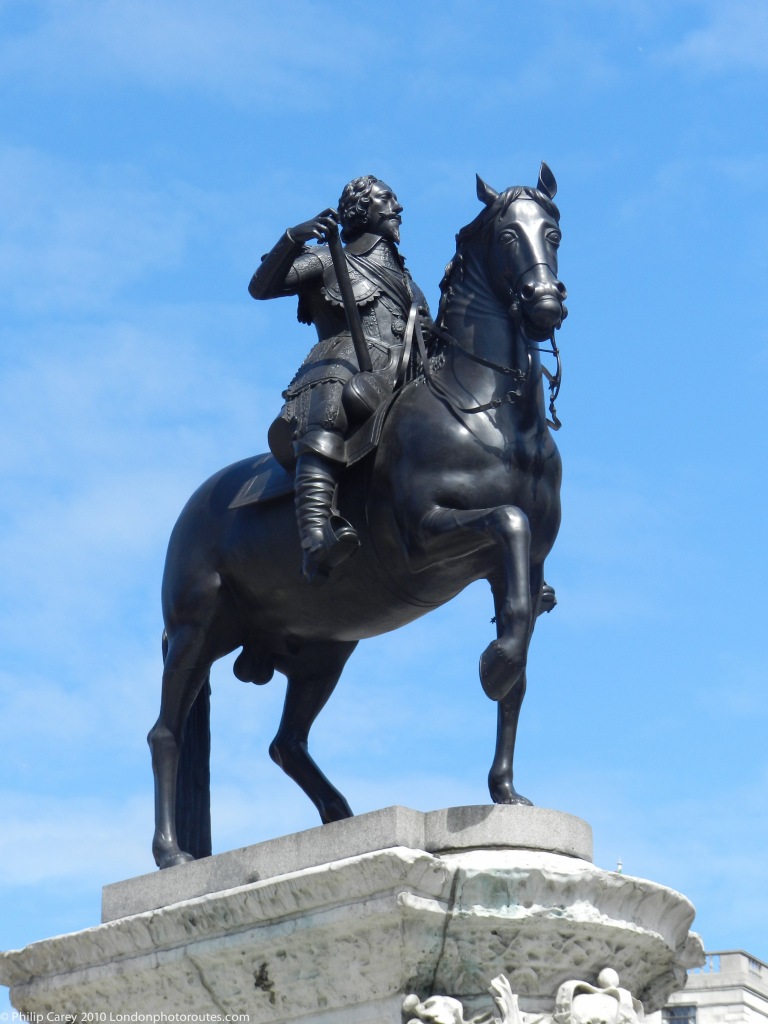Trafalgar Square is one of the key site in London as is great for both a photographic venue and for exploring other parts of London. It is a big open space with famous buildings along its sides and view off to the Houses of Parliament and Whitehall. It is also full of statues and monuments which are interesting in the own right, and easy to photograph – but sometimes it helps if you know some of the background. Apart from the fourth plinth, most of these date to the 19th century.
The mornings tend to be less crowded then later on in the day, but you may sometimes find that there are events taking place which can spoilt your shots.
Its also a good spot t practice street photography.
Here is a bit more information on the different statues, buildings and monuments that you can see in this area.
4th Plinth
The fourth plinth on the northwest corner, designed by Sir Charles Barry and built in 1841,[7] was intended to hold an equestrian statue of William IV, but remained empty due to insufficient funds. The new Greater London Authority assumed responsibility for the fourth plinth and started its own series of changing exhibitions:
Sir Henry Havelock
Major-General Sir Henry Havelock, KCB (5 April 1795 – 29 November 1857) was a British general who is particularly associated with India. He was noted for his recapture of Cawnpore from rebels during Indian Rebellion of 1857.
George IV
(George Augustus Frederick; 12 August 1762 – 26 June 1830) was the King of Hanover and the United Kingdom of Great Britain and Ireland from the death of his father, George III, on 29 January 1820 until his own death ten years later. From 1811 until his accession, he served as Prince Regent during his father’s relapse into insanity.
Sir Charles Napier
General Sir Charles James Napier, Order of the Bath (August, 10, 1782 – August 29, 1853), was a general of the British Empire and the British Army’s Commander-in-Chief in India, notable for conquering the Sindh Province in what is now Pakistan
National Gallery – free entry
Holds the national collection of paintings from 1300-1900. It was founded in 1824
Portrait Gallery.
The present building, the third to house the National Gallery, was designed by William Wilkins from 1832–8
George Washington
George Washington was originally working for the British military, but ended up fighting against them when the people in the USA rebelled when they wanted to stop paying high taxes to the British. He went on to become the first ever President of the USA. The bronze statue is a replica of Jean Antoine Houdon’s marble statue in Richmond, Virginia, Washington apparently said, “I will never set foot in London again!” so dirt was brought from Virginia and that’s what he’s standing on.
Trafalgar Square
This positioned in the heart of London and is London’s most famous square as well as being the focus for celebrations like New Yeats Eve and political demonstration. This square was designed by Charles Barry and complete in 1845 on the site of the King Mews. The fountains are memorials to Lord Jellicoe (western side) and Lord Beatty (eastern side), Jellicoe being the Senior Officer. Lions that guard the statue were designed by Landseer. The mermaid is by William McMillan RA (1887-1977) and unveiled in 1948, having been delayed by the 1939-1945 war.
Nelson Column – Viscount Horatio Nelson
This commemorates Lord Nelson’s victory at the Battle of Trafalgar in 1812. The 44 meter high column was erected in 1843. The bronze reliefs at the bottom were made from cannon captures Nelson battles. The four 6 meter Lions that guard the statue were designed by Landseer
King Charles I and Island
Charing Cross is officially recognized as the centre of London. King Charles I was beheaded in 1649 further down Whitehall and he looks towards the Parliament who, under Oliver Cromwell, ordered his execution.
Canada House
Canada House is a Greek Revival building on Trafalgar Square in London that is part of the High Commission of Canada in London. It was originally used by the Union Club and the Royal College of Physicians
South Africa House
South Africa House was built by Holland, Hannen & Cubitts in the 1930s on the site of a derelict hotel., and is now the home of the The High Commission of South Africa.
Smallest Police Station
In the southeast corner of Trafalgar Square, unnoticed by most visitors, is what many have called the world’s smallest police station. There’s only room for one inside and these days it is used as a storage room by the cleaners. Trafalgar Square has always been a centre for protests so the tiny police station was built into the original plans as a lookout post so the authorities could keep a check on the many marches and protests















